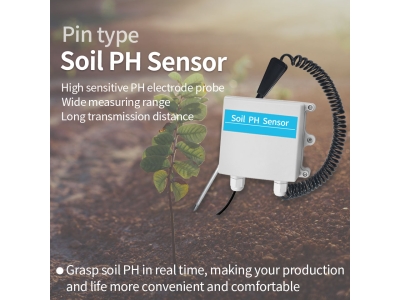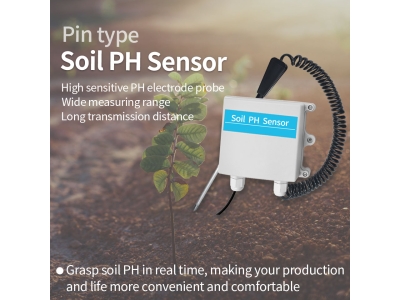Effective crop management is crucial for optimizing agricultural productivity, minimizing resource wastage, and ensuring sustainable farming practices. In recent years, soil sensors have emerged as a revolutionary technology that is transforming the way we manage crops. By providing real-time and accurate data on soil conditions, these sensors enable farmers to make informed decisions regarding irrigation, fertilization, and overall crop health. This article will explore how soil sensors are revolutionizing crop management strategies and promoting sustainable agriculture.
Real-Time Soil Monitoring:
Traditional crop management techniques often rely on manual observations or periodic soil testing. However, these methods do not provide real-time information on soil conditions and can lead to inefficiencies or missed opportunities. Soil sensors offer continuous and automated monitoring of soil parameters such as moisture levels, temperature, nutrient levels, and pH balance. This real-time data empowers farmers to respond quickly and make timely adjustments to optimize crop growth and yield.

Precision Irrigation:
Water scarcity is a significant concern in agriculture, and excessive irrigation can lead to water wastage, waterlogging, and nutrient leaching. Soil sensors provide critical information about soil moisture levels, enabling farmers to implement precision irrigation strategies. By only applying water when necessary and in the right amount, farmers can avoid over- or under-irrigation, leading to improved water-use efficiency, healthier plants, and reduced environmental impact.
Efficient Nutrient Management:
Optimal nutrient levels in the soil are essential for plant growth and productivity. Soil sensors help farmers monitor nutrient availability by providing real-time data on elements like nitrogen, phosphorus, and potassium. This information allows farmers to adjust fertilizer applications precisely, avoiding excessive use or deficiencies. By optimizing nutrient management, soil sensors promote efficient resource usage, minimize environmental pollution, and reduce costs for farmers.
Disease and Pest Management:
Early detection and management of diseases and pests are vital for crop health and yield. Soil sensors can provide valuable insights into plant stress or potential pest infestations by monitoring changes in soil conditions. By detecting these issues early, farmers can implement targeted disease and pest control measures, reducing the need for broad-spectrum pesticides and minimizing environmental impact. Additionally, soil sensors can help track the effectiveness of management strategies, allowing farmers to make data-driven decisions.
Data-Driven Decision Making:
Soil sensors generate a vast amount of data, but this data is only valuable when effectively analyzed and utilized. Advanced analytics and machine learning algorithms can process sensor data and provide actionable insights to farmers. By leveraging this technology, farmers can make data-driven decisions regarding crop selection, irrigation scheduling, nutrient application, and other management practices. This approach improves overall efficiency, reduces costs, and maximizes crop productivity.
Sustainable Farming Practices:
The integration of soil sensors in crop management strategies promotes sustainable farming practices. By optimizing resource usage, such as water and nutrients, soil sensors minimize waste and environmental pollution. Precision irrigation and nutrient management reduce water consumption, limit fertilization runoff, and protect water bodies from contamination. Moreover, efficient disease and pest management strategies foster ecosystem health, preserving biodiversity and beneficial organisms. These sustainable practices contribute to long-term environmental sustainability and resilience in agriculture.
Conclusion:
Soil sensors have revolutionized crop management strategies, offering real-time and precise information on soil conditions. By harnessing this technology, farmers can optimize irrigation, nutrient management, disease control, and overall crop health. The result is increased productivity, minimized resource wastage, and improved sustainability in agriculture. As we strive for a more sustainable future, the integration of soil sensors is crucial in supporting resilient and efficient crop management practices. By empowering farmers with data and insights, soil sensors are transforming the way we approach agriculture and ensuring a healthier, more productive planet.






